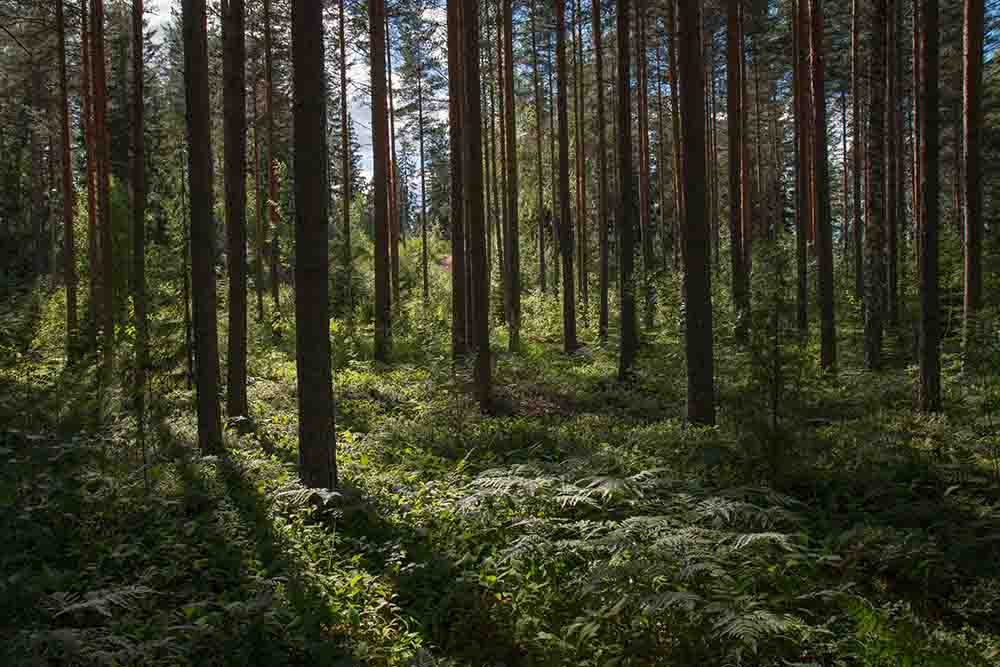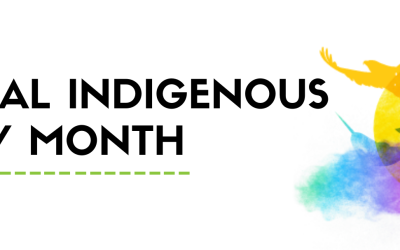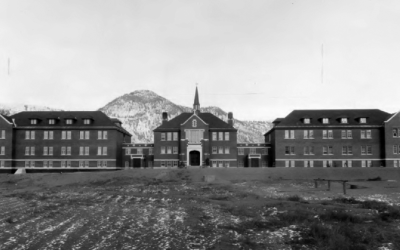“… if it was not so serious Espanola’s declaration or whatever it is would be laughable, but it is not alone … So few realize if this .. continues some years from now it will be used in some claim.”
-Retired Supreme Court Justice Jack Major.
The increasing constitutional power being granted to Indigenous groups by our courts and governments is creating a crisis of diminished Crown sovereignty. This process is damaging the Canadian economy, weakening the rule of law, and most importantly, increasing racial divisions in the country.
Now, there is another process that is causing even more division. This is the use of Indigenous land acknowledgments (ILAs) by governments, crown corporations, and universities and colleges, among other organizations. Institutions that make these declarations should, in the better pursuit of their own long-term interests, and in furtherance of the public interest, stop using them. They might sound nice but they are usually factually inaccurate or misleading and they can create unintended, adverse legal consequences.
The City of Toronto describes the nature and purpose of an ILA as follows:
…a statement recognizing the traditional territory of the Indigenous people(s) who called the land home before the arrival of the settlers…providing a land acknowledgement at the beginning of an event or meeting gives time for reflection and demonstrates recognition of Indigenous lands, treaties and peoples. It involves thinking about what happened in the past and what changes can be made going forward in order to further the reconciliation process… Using and participating in a land acknowledgement is a way to recognize the enduring presence and resilience of Indigenous peoples in this area from time immemorial. They are also a reminder that we are accountable to these relationships. 1 (Emphases added.)
Many municipalities across the country are now publishing similar ILAs, including that of my hometown of Espanola, Ontario. The Espanola ILA reads as follows:
Please acknowledge with us, that meetings of council are held in the traditional territory of the Anishinabek, where the Chiefs of Sagamok Anishinabek, White Fish River and Atikameksheng Anishinabek agreed to share this land through the Robinson-Huron Treaty of 1850. (Emphases added)2
The Association of Municipalities of Ontario (AMO) defines an ILA as “a practise of reconciliation aimed at recognizing the traditional or treaty territories of Indigenous peoples.” The Association also warns municipalities about potential problems with these statements:
While municipal governments should be mindful that inaccurately acknowledging entities and territories may have legal implications, land acknowledgement statements are best interpreted as a venue for recognizing what is known of past Indigenous usage and occupation of land. (Emphases added)3
Espanola’s statement that by the Treaty, the signatory Indian bands agreed to “share this land” is a clear illustration of an “inaccurately” stated ILA having unintended and potentially very harmful legal implications, both for the town and its taxpayers.
Contrary to what the town’s ILA asserts, the Robinson Huron Treaty of 1850 said nothing about “sharing this land.” In fact, it said the opposite: “…the Chiefs…do hereby fully, freely and voluntarily surrender, cede, grant and convey unto Her Majesty (the Queen) all their right, title and interest in and to, and in the whole of…the territory…” covered by the Treaty. (Emphases added)4
There is not one word in the Treaty about “sharing” the land. As well, there was no discussion about “sharing” in the deliberations leading up to the signing of the Treaty. The negotiations were only about surrendering and ceding the Treaty territory to the Queen, now recognized as the Crowns of Canada and Ontario, with the exception of the reserves that were established by the Treaty. The companion Robinson Superior Treaty, dealing with the bands in the territory along the north shore of Lake Superior was worded the same way. (Together these two documents are called “the Robinson Treaties.”)
Another problem with the “share this land” statement is that when the Robinson Treaties were signed there were so few Indians in the Treaty territories, and they were spread so thinly, and they exercised such scant possession of and control over those territories, that it cannot reasonably be claimed that they were anything like “owners” with something to “share.” To “share” something you have to own it, showing “ownership.” That was not the case here. Europeans, with neither invitation nor opposition, simply moved in and occupied land that was largely empty.
As Indigenous author and lawyer William Wuttunee wrote in Ruffled Feathers: “The further ideas that “Indians were the first owners of this country” and “the land was taken from them,” are misconceptions. At the time of the arrival of the white man, the Indian did not occupy all the country; therefore it cannot be said that the land was taken away from him. Those areas which were unoccupied were never taken away from anyone.”5
Following Mr. Wuttunee, the Robinson Treaty territories were mainly unoccupied. The land covered by the Treaty stretched from near Penetanguishene, at the southern end of Georgian Bay, to Lake Superior’s Batchewana Bay, just north of Sault Ste. Marie. Only 17 Indian bands, numbering only 1422 people, lived in this vast area. Each of the 17 band Chiefs who signed the Treaty represented only about 85 people including women and children. It was basically the same for the Robinson Superior Treaty area.6
These small bands were not “nations” in any strict sense of the word. They were merely small clans or families scattered loosely and tenuously over a vast landscape, and they did not exercise any real control over the landscape.
So again, it was not really a “land sharing” per se that happened in 1850.
Why does this error in the Espanola ILA matter? What might the significance be of the Toronto ILA declaring that non-Indigenous Canadians must be “accountable” to their relationships with Indigenous Canadians? What might be the “legal implications” touched upon by the AMO?
Despite my saying that the Treaties were all about the surrender of the territories and not the sharing of territories, there is now one Ontario Superior Court of Justice decision, Restoule,7 that is an example of the Court’s interpretation that the Robinson Treaties were indeed agreements to share the territories and not surrender them. This decision is a massive blow to Crown sovereignty, which is the mainspring of our economy and the fount of the rule of law that governs us. In Restoule, the court ordered Canada and Ontario to pay to the Robinson Treaties bands an appropriate share of all the revenue that Ontario has received from the sale, leases, and licenses of Crown lands, possibly going back to 1850-1875. The compensation has not yet been calculated. (The decision is being appealed by Ontario.) Nevertheless, the final payment to these bands, if this decision is not overturned, will likely be in the millions if not in the billions of dollars. This money will have to come from already hard-pressed taxpayers.8
Indian bands in Western Canada and elsewhere, inspired by Restoule, are now claiming that their particular land surrender Treaties did not mean what they clearly state, but rather they were a sharing agreement. Again, there will be further untold wounds to Crown sovereignty and high costs to governments and taxpayers if this new view of the treaties prevails.
So Espanola’s high-minded and well-intentioned ILA, like all ILAs across the country, is harmful on both policy and practical grounds. Like many of the other ILAs, this statement is against the citizens’ own legal and financial interests, because this Restoule “sharing” interpretation of the Treaty has been implicitly agreed to in Espanola’s ILA. Perhaps the court hearing the appeal of the Restoule decision will be influenced by the fact that the Town of Espanola apparently supports the Indian bands’ claims.
This is a national concern with ILAs. There are numerous Indigenous compensation and land claims against the federal and provincial governments working their way through Canadian courts. ILAs, which in terms of the law of evidence, could be regarded as “statements against interest” to which courts have traditionally given substantial weight. They could well be taken judicial notice of by a Court in an Indigenous rights case and used as an interpretation aid in favour of the Indigenous claimants against the Crown.
Let’s look at another example. In Eastern Ontario the federally funded Canada Council for the Arts acknowledges that it is situated “on the unceded, unsurrendered Territory of the Anishinabe Algonquin Nation.”9
This assertion is not strictly true. In the mid-1600’s the Algonquins were driven out of the Ottawa Valley by the Iroquois, and they did not return for 200 years, and then only in tiny numbers. The Council further states that it will “honour the commitments to self-determination and sovereignty we have made to Indigenous Nations and Peoples.” Considering that the “Algonquin Nation” is suing Canada, claiming that the Nation is the true “sovereign” owner of the entire lower Ottawa Valley, including Parliament Hill, and that the matter is before the Courts, this kind of ILA has the potential to be a serious, self-inflicted legal wound.10
All ILAs implicitly endorse and encourage the maintenance and expansion of the current harmful Indigenous-non-Indigenous status quo created and furthered by our courts, academia, the media, and politicians. This status quo posits that Indigenous groups are separate, independent, self-governing “nations” within Canada, and that Canada’s task is to promote “reconciliation,” by promoting their further independence from (but not lessen their financial dependence on) the rest of Canada. For the reasons clearly set out in my book, There Is No Difference,11 I argue that this is a destructive, dysfunctional, and disastrous status quo for both Indigenous and non-Indigenous Canadians. Simply put, the heart of this vision is that the sovereign rights of our governments to make laws for the benefit of all Canadians are diminished when it comes to Indigenous people. This situation, which some political elites want to expand even further, means that Indigenous groups will claim, as they are already doing, that many of our duly elected governments’ laws and regulations will no longer apply to them because they are “sovereign nations” governed by their own laws, even as their nations are completely enclosed within the Canadian landmass. Recently, Canadians have heard this claim in relation to the blockades of roads, railways and pipeline construction, and most recently in relation to the Nova Scotia lobster fishery.
The political philosopher Edmund Burke wrote that a government “cannot renounce its share of authority,” and that any government or society that does so “must soon be disconnected into the dust and powder of individuality.”12
Our political elites are now actively renouncing significant portions of the legitimate “authority” of our governments in favour of Indigenous groups. As a result, they are weakening the provincial and the federal governments’ hitherto sole and sovereign legal authority to act for the general welfare of all Canadians, regardless of race. In doing this, these elites are inadvertently pitting groups of Canadians against each other.
Why is sole Crown sovereignty so important?
Crown sovereignty is the fount and the guardian of our democracy, our property rights, our economy and of the rule of law. To diminish the Crown’s sovereignty is to attack the Crown revenue, harm the economy, weaken the rule of law and, overall, diminish our democracy. In the final analysis, it is only a fiscally sound and a strong, solely sovereign state that can best protect and advance the rights and the general welfare of all Canadians, regardless of race.
So there cannot be any room in all of this for the existence of numerous, separate, autonomous, Indigenous Nations, “mini-states,” which are illiberally based on the race of a group of people.
Again, ILAs are dangerously and improperly wading into profound, nuanced, and complicated areas of public policy and constitutional law.
There are other reasons why ILAs should be repealed.
At best, ILAs constitute vague, bland, virtue signalling. They don’t do anything constructive to help Indigenous peoples. What difference does it make that 400 years ago Indigenous peoples were the sole residents of what is now Canada? Indigenous and non-Indigenous cannot continue to be prisoners of the past. Today our Indigenous population continue to face terrible and tragic social conditions. How do these ILAs constructively help our Indigenous peoples now and in future? They don’t. All they do is support the utterly failed and harmful status quo.
Finally, ILAs, with their obsessive and relentless focus on race, increase the tension between Indigenous and non-Indigenous people instead of decreasing it. The socially coercive nature of these ILAs leads to a confused, sometimes grudging, silent submission to them. No one likes the feeling of being compelled to having to submit to listening to words they are unsure of or may disagree with. Instead of binding us together with a constructive vision of the future, with their unrelenting, misrepresentative focus on the distant past, these ILAs push us apart.
[show_more more=”SeeEndnotes” less=”Close Endnotes”]
- See The City of Greater Toronto official website.
- Espanola Mid-North Monitor, October, 2020.
- Association of Municipalities official website.
- Full text of the Treaties and official reports relating to them are in The Treaties of Canada with the Indians, by Alexander Morris, 1880, (Facsimile edition reprinted by Coles Publishing Company, Toronto, 1969).
- William Wuttunee, Ruffled Feathers-Indians in Canadian Society (Calgary, AB: Bell Books, 1971), at page 140. Mr. Wuttunee, from the Saskatchewan Red Pheasant Reserve, was one of the founders of what became the Assembly of First Nations, and was one of Canada’s first Indigenous lawyers.
- Letter dated September 24th, 1850, from Crown treaty negotiator, William Robinson, to the Superintendent of Indian Affairs. See Alexander Morris, The Treaties of Canada with the Indians. Morris wrote that the purpose of the Robinson Treaties was “to extinguish” the Indian title.
- See 2018 ONSC 7701.
- This expenditure will likely result in harmful consequences to Ontarians, perhaps reducing operating grants to municipalities like Espanola because the provincial and federal governments are already providing services to the citizens only with the artificial and precarious aid of massive amounts of borrowed money.
- Official website of the Canada Council of the Arts
- If the Algonquins win this case, then Canadian taxpayers, like in the Restoule situation, will be on the hook for millions or billions of dollars in compensation. If this happens, Ottawa, and thus the Canadian taxpayer, will have to come up with the money.
- See my website thereisnodifference.ca.
- Quoted by historian Tony Judt in Ill Fares the Land, (Toronto, ON: Penguin, 2010).
[/show_more]
*Raised in Espanola, Peter Best has practised law in Sudbury, Ontario, for the past 45 years. There Is No Difference has been endorsed by Jack Major, retired Justice of the Supreme Court of Canada.
Photo by Rural Explorer on Unsplash.



